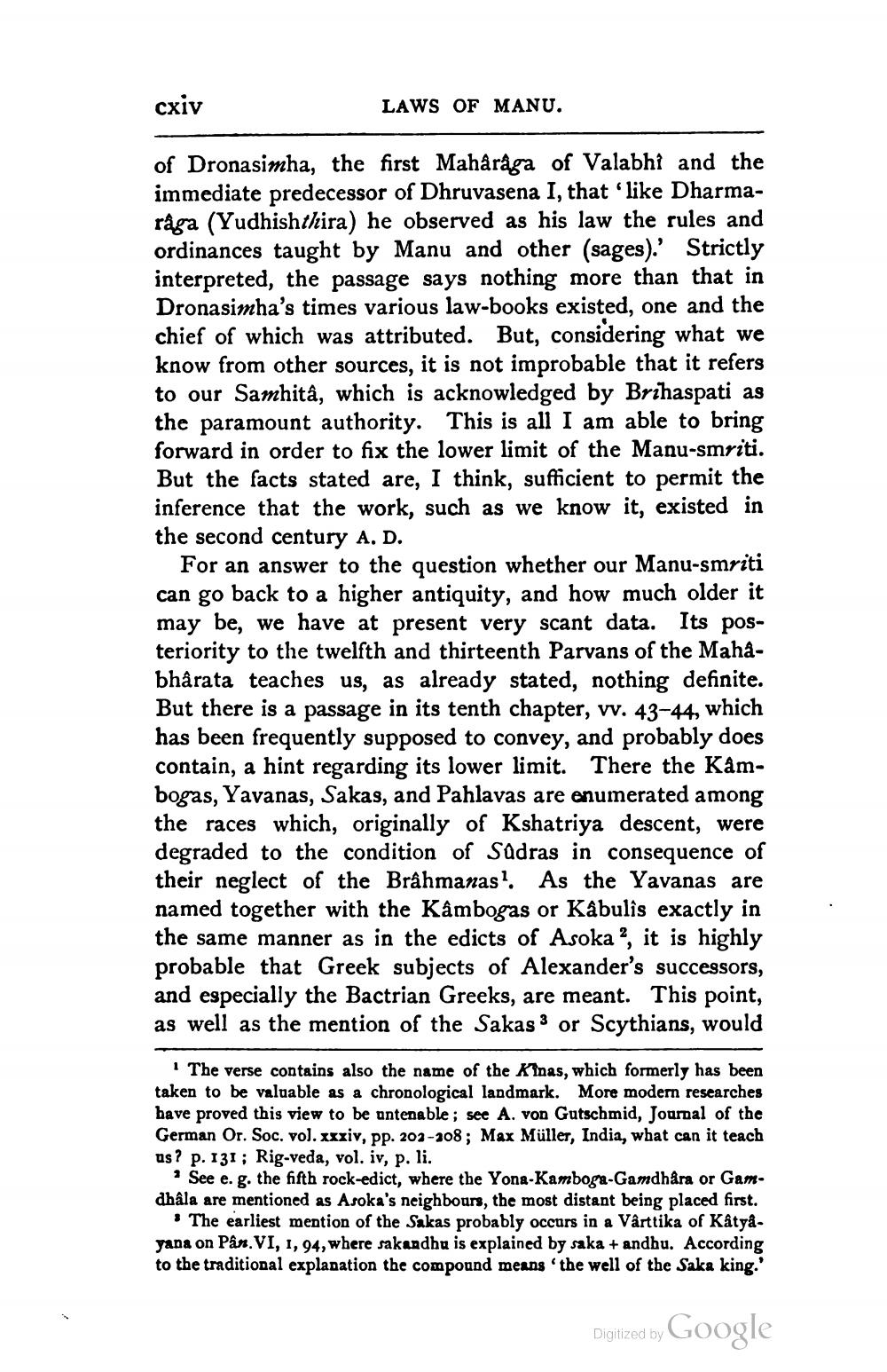________________
cxiv
LAWS OF MANU.
of Dronasimha, the first Mahâråga of Valabhi and the immediate predecessor of Dhruvasena I, that like Dharmaraga (Yudhishthira) he observed as his law the rules and ordinances taught by Manu and other (sages).' Strictly interpreted, the passage says nothing more than that in Dronasimha's times various law-books existed, one and the chief of which was attributed. But, considering what we know from other sources, it is not improbable that it refers to our Samhitâ, which is acknowledged by Brihaspati as the paramount authority. This is all I am able to bring forward in order to fix the lower limit of the Manu-smriti. But the facts stated are, I think, sufficient to permit the inference that the work, such as we know it, existed in the second century A. D.
For an answer to the question whether our Manu-smriti can go back to a higher antiquity, and how much older it may be, we have at present very scant data. Its posteriority to the twelfth and thirteenth Parvans of the Mahabharata teaches us, as already stated, nothing definite. But there is a passage in its tenth chapter, vv. 43-44, which has been frequently supposed to convey, and probably does contain, a hint regarding its lower limit. There the Kambogas, Yavanas, Sakas, and Pahlavas are enumerated among the races which, originally of Kshatriya descent, were degraded to the condition of Sadras in consequence of their neglect of the Brâhmanas?. As the Yavanas are named together with the Kâmbogas or Kabulis exactly in the same manner as in the edicts of Asoka?, it is highly probable that Greek subjects of Alexander's successors, and especially the Bactrian Greeks, are meant. This point, as well as the mention of the Sakas 3 or Scythians, would
The verse contains also the name of the Kinas, which formerly has been taken to be valuable as a chronological landmark. More modern researches have proved this view to be antenable; see A. von Gutschmid, Journal of the German Or. Soc. vol. xxxiv, pp. 203-308; Max Müller, India, what can it teach us? p. 131; Rig-veda, vol. iv, p. li.
. See e. g. the fifth rock-edict, where the Yona-Kamboga-Gamdhåra or Gam. dhâla are mentioned as Asoka's neighbours, the most distant being placed first.
• The earliest mention of the Sakas probably occurs in a Vârttika of Kåtgåyana on Pån. VI, 1, 94, where sakandhu is explained by saka +andbu. According to the traditional explanation the compound means 'the well of the Saka king
Digitized by Google




